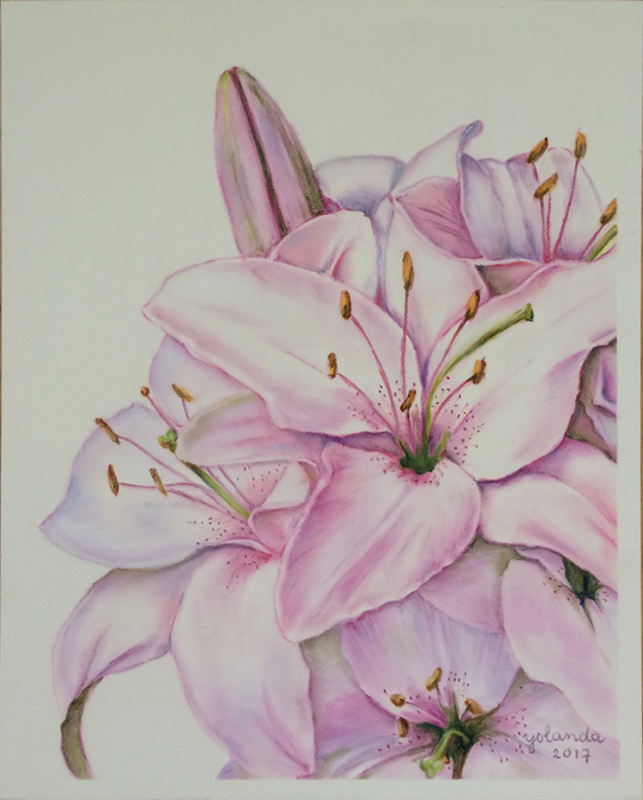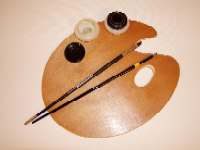 There are now many different types of palettes on the market. Sometimes it's hard to see the forest for the trees. Which palette should you use for which paint? Below is an overview of the most common palettes. There are now many different types of palettes on the market. Sometimes it's hard to see the forest for the trees. Which palette should you use for which paint? Below is an overview of the most common palettes. |
Palettes for Watercolor/Gouache |
Sealable Plastic Watercolor Palette: Ideal for outdoor work. This palette can be sealed to prevent mess during transport. Squeeze paint from the tube into a small compartment and use larger compartments for mixing. Dried paint can be reused.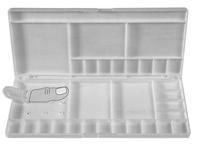 |
Mixing Tray in Traditional Palette Shape: Not very practical for mixing due to the small compartments. Also commonly used for poster paint.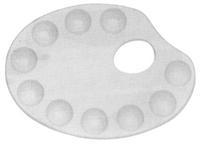 |
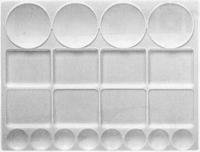 Palette with Various Mixing Trays: Fill small compartments with different colors and use larger ones for mixing. Palette with Various Mixing Trays: Fill small compartments with different colors and use larger ones for mixing. |
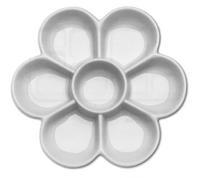 Porcelain Mixing Tray: Unlike some plastic palettes, porcelain doesn't absorb dyes, keeping the palette white. The depth of the compartments allows for mixing larger quantities of paint. Porcelain Mixing Tray: Unlike some plastic palettes, porcelain doesn't absorb dyes, keeping the palette white. The depth of the compartments allows for mixing larger quantities of paint. |
| DIY Tip: Instead of buying a watercolor palette, you can use a white (porcelain) plate. Squeeze paint from the tube onto the rim and mix in the center. Tip: If you want kids to use "expensive" watercolor paint from tubes, put some of each color into a small compartment of a sealable plastic watercolor palette. Let the paint dry before use. This ensures the paint is better diluted and lasts longer. |
Palettes for Acrylic Paint |
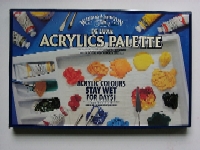 Stay-Wet Palette: With special membrane paper, acrylic paint stays moist and ready to use for days. Apply paint to the edges and mix in the center. Stay-Wet Palette: With special membrane paper, acrylic paint stays moist and ready to use for days. Apply paint to the edges and mix in the center. |
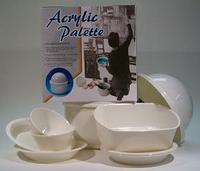 Acrylic Palette with Various Trays: The paint doesn't adhere to the trays, so they don't need to be rinsed. Let the paint dry and peel it off. These palettes come in various forms, some with lids. Acrylic Palette with Various Trays: The paint doesn't adhere to the trays, so they don't need to be rinsed. Let the paint dry and peel it off. These palettes come in various forms, some with lids. |
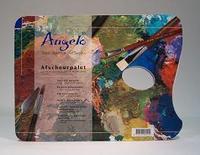 Tear-Off Palette: Simply tear off the dirty sheet after use and start with a new one. Available in multiple sizes and brands. Tear-Off Palette: Simply tear off the dirty sheet after use and start with a new one. Available in multiple sizes and brands. |
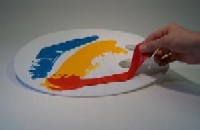 White Oval Plastic Palette: Dried acrylic paint can be easily peeled off this palette. White Oval Plastic Palette: Dried acrylic paint can be easily peeled off this palette. |
| DIY Tip: Acrylic paint dries quickly on your palette. To prevent this, you can make a "wet palette." Use a shallow plastic box with a lid. On the bottom, place two layers of paper towel and wet them. Lay a sheet of parchment paper on top. Press it down firmly. When you're done painting, close the lid tightly. The paint will stay fresh for up to a week. Tip: A homemade "wet palette" can be used both for outdoor painting and in your studio. Since it can be covered, you can transport it without making a mess. |
Palettes for Oil Paint |
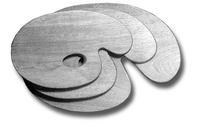 Standard Oil Paint Palette: Usually made of unvarnished wood, but sometimes plastic or glass. Apply paint to the edges and mix in the center. Scrape off paint residues after use. Standard Oil Paint Palette: Usually made of unvarnished wood, but sometimes plastic or glass. Apply paint to the edges and mix in the center. Scrape off paint residues after use. |
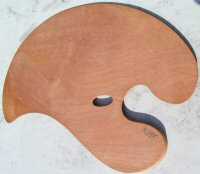 Professional Wooden Palette with Arm Support: Useful for longer sessions. Apply paint to the edges and mix in the center. Scrape off paint residues after use. Professional Wooden Palette with Arm Support: Useful for longer sessions. Apply paint to the edges and mix in the center. Scrape off paint residues after use. |
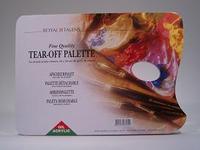 Tear-Off Palette: Tear off the dirty sheet after use and start with a new one. Available in multiple sizes and brands. Tear-Off Palette: Tear off the dirty sheet after use and start with a new one. Available in multiple sizes and brands. |
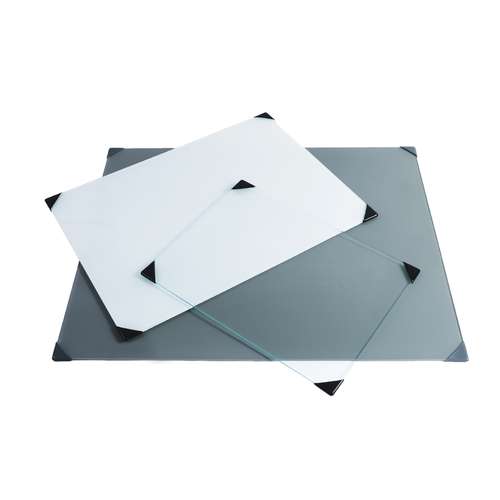 Glass Palette: Easy to clean and available in various backgrounds (white, gray, or transparent). Glass Palette: Easy to clean and available in various backgrounds (white, gray, or transparent). |
| DIY Tip: You can make an oil paint palette from plywood or plexiglass. Cut it to your desired shape and size. Sand the edges to avoid sharpness. Place a colored paper matching your background under the palette to see how your mixed colors will look. Tip: To store an oil paint palette with paint on it, cover the paint with plastic wrap. This keeps the paint usable for a long time and allows you to transport the palette without making a mess. |



